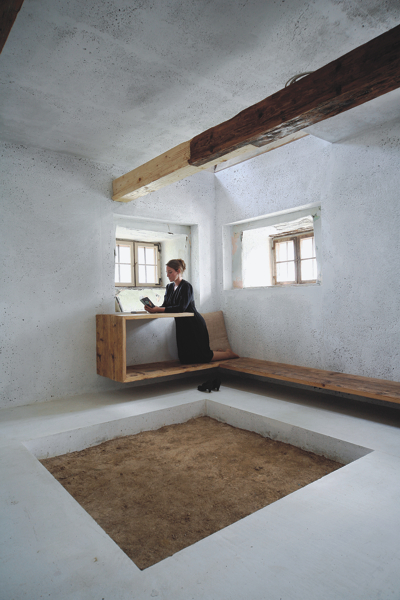The Rebirth of a Farm House

Jutta G├Črlich artist and Peter Haimler architect decided to have their family home in Germany, in the tiny illage of Viechtach near the Czech border. The house they chose was a peasant house built around 1840 far away from the village. It is a building of traditional construction in which people and animals live side by side only separated by a wall. The owners collected and and categorized every item of the former dwellersŌĆÖ heritage and Peter Haimler set four concrete cubes into the building whilst leaving the original house intact. He made implants which he inserted into the old structure with the carefulness of a surgeon. The cubes were poured in-between the old walls from the direction of the ruined roofing. With the maze of the shuttering and rigid supports he created the complex and coordination of slit stone-, wood and concrete walls. 
The built-in cubes are the cells of the ŌĆ×second modernŌĆØ, which are friendly in spite of their puritan simplicity and define one-third of the building. The contrast of the old and the new characterizes the furnishing of the building as well. The benches were made of the wood of an old grain box, the stove was technically updated and installed next to the sink, but is heated in the traditional way. The bath and the mosd├│kagyl├│ was poured of concrete, but despite their material they remind us of old tubs and troughs. Step by step we can see the alternation of the 19th and the 20th century. We can witness today and tomorrow, the rationality of peasants and contemporary radicalism responding to each other. Of this eventually the gesture of bow expressing the respect of traditions prevails.
Dieter Bartetzko

